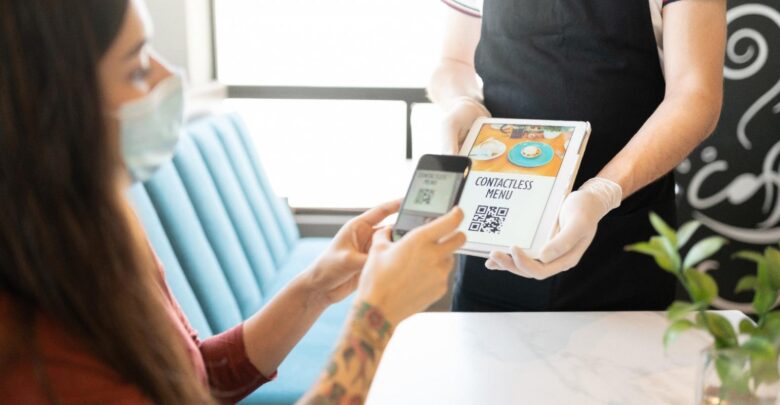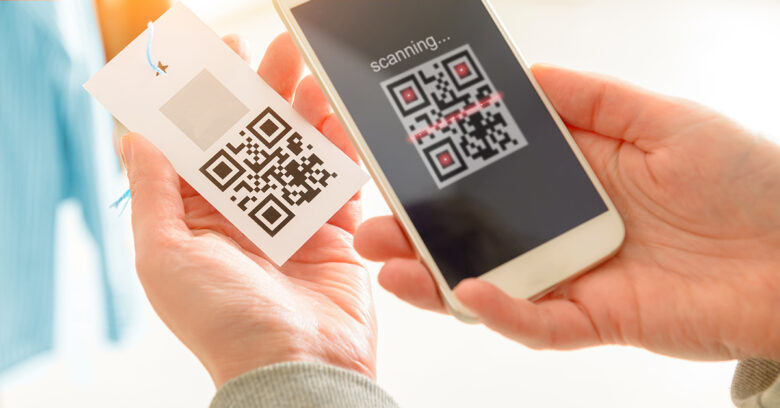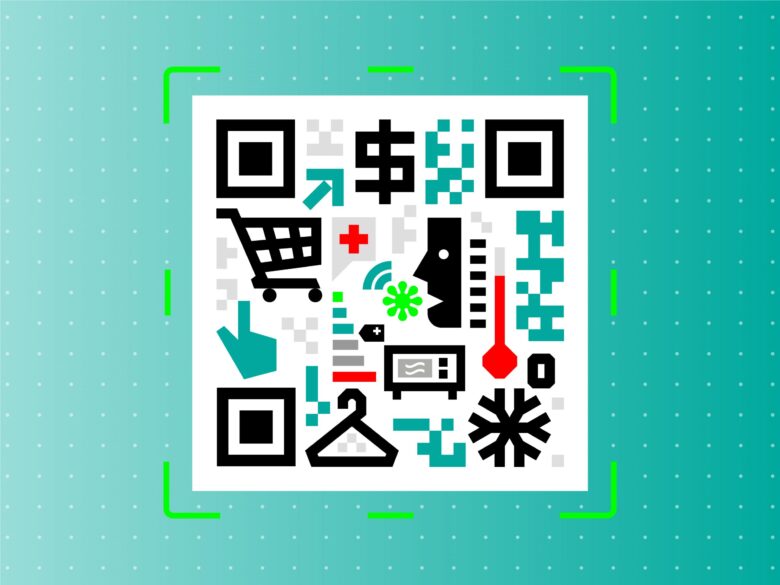Our lives will be affected by the Covid 19 pandemic for a long time as it has changed so many things and behaviors. At the height of the pandemic, when we were locked at home, not allowed to leave except for essential reasons, we relied heavily on masks, gloves, and antibacterial gel. It’s no wonder QR codes are so popular since they enable contactless payments and services.
The beginnings of QR codes
It may be difficult to imagine and believe it, but QR codes were created in 1984, only to make inventory of Japanese car parts as easy as possible. Since then, the use of Qr codes has become almost inevitable, making our lives much easier.
A QR or Quick Response code, is a two-dimensional barcode in the shape of a square that can be created by a free QR code generator. It allows you to store a vast amount of data – characters or numbers. Marketers and companies owners use them to lead customers to their social media, videos, websites, or special offers.
With most smartphones, scanning is fast, easy, and without requiring extra apps, although QR code scanners are also available.
The impact of Covid on QR code usage

Source: food-management.com
As a result of the pandemic, and especially during the lockdown period, 25 times more restaurants began using QR codes, and 7 times more hotels. It resulted from the fact we all preferred contactless payments and service, making scanning QR codes much more convenient than reading menus previously touched by 100 customers.
The same happened in hotels, where the check-in was fully automated by the use of QR codes. The quests received their personal codes for their reservation, with all the details already visible to the receptionist. The contact has been brought to minimum, with much shorter time spent at the reception, which meant no more lines.
In the US, using QR codes or single use menus is obligatory in case of restaurant and hospitality outlets, according to the post-covid guidelines. All citizens owning a vaccination certificate against Covid 19 have probably noticed the QR code containing information about the vaccination, making it difficult to falsify.
What can QR codes be used for?
There are many potential uses for QR codes, but they have become particularly popular as a way to share contact information and facilitate contactless payments during the Covid pandemic.
QR codes can be used to store any type of information, including text, URLs, or even barcodes. This makes them very versatile, and they can be used for a variety of purposes. For example, you can use a QR code to share your website URL with someone so they can easily visit it, or you can use it to store your email address so that people can easily send you a message.
QR codes have also become popular as a way to make contactless payments. If you have a smartphone with a QR code reader, you can scan a QR code to make a payment without ever having to physically touch the person or object you’re paying for. This was especially useful during the Covid pandemic when there is an increased risk of transmission if people are touching the same surfaces.
There are many other potential uses for QR codes beyond these two examples. With their increasing popularity and availability, it’s likely that we will see even more innovative uses for QR codes in the future.
What are the benefits of using a QR code?

There are many benefits of using QR codes, including:
- Increased engagement with your audience – QR codes can be used to encourage people to interact with your brand or product in a variety of ways, such as by offering special discounts or competitions.
- An easy way to share information – QR codes can be used to quickly and easily share information with your target audiences, such as product details, contact information, or website links.
- A trackable marketing tool – QR codes offer the ability to track how many people scan your code and visit your website or landing page. This data can be extremely valuable in understanding the effectiveness of your marketing efforts.
- A versatile tool – QR codes can be used in a variety of ways to suit your specific marketing needs. For example, you could use them in print ads, on the packaging, or even on business cards.
- An affordable option – Unlike other marketing tools that can be quite costly, QR codes are relatively inexpensive to create and use.
How can you create your own QR code?
The process is actually quite simple. There are a variety of websites and apps that allow you to create your own QR code for free.
To generate a QR code, you first need to decide what type of data you want to encode. This can be anything from a website URL to a simple text message. Once you have your data ready, there are a few different ways to create your QR code.
One option is to use an online QR code generator. There are many websites that offer this service, such as QRCode-Generator.com or GoQR.com. Simply enter the data you want to encode and follow the instructions on the website to generate your QR code.
Another option is to use a mobile app. There are several apps available for both iPhone and Android that allow you to create QR codes. For example, the Qrafter app (for iPhone) and QR Droid (for Android) both offer this functionality.
What’s the future of QR codes?

Source: kaspersky.com
The pandemic has made us realise how many activities can be done in a contactless way, and the trend will not disappear when the pandemic is over. Once we’ve become accustomed to doing online shopping, doing business online, without going outside our homes to do the business in person, we won’t want to stop. QR codes make our lives so much easier.
With the trend of getting rid of banknotes and replacing them with electronic money, QR codes used for payments might become more popular in the near future. With QR codes based payments, China has almost gotten rid of terminals.
Interactive elements tend to attract us more, so companies are in the perfect position to make their products and services unforgettable. Its ability to prevent falsification, combined with its ability to prevent fraud, makes it even more attractive to institutions and businesses.
Conclusion
It’s clear that the Covid pandemic has had a major impact on QR code usage. With more businesses requiring contactless payment and check-in, QR codes have become an essential part of many people’s lives. It’s likely that QR code usage will continue to grow in the coming months and years, as we adapt to a new normal that includes social distancing and other measures to prevent the spread of disease.
